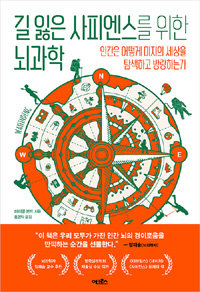Instinct to find paths creates history of humanity
Instinct to find paths creates history of humanity
Posted October. 17, 2020 08:03,
Updated October. 17, 2020 08:03

Is it true that men find paths better than women? This question is always asked when there is dispute over whether men and women have different capabilities. However, we have not seen any book that scientifically analyzes this question. If we read a book introducing studies that have been done objectively and cool-mindedly, this dispute may prove to be more productive.
The author, a contributing writer to The New York Times and Nature, is addressing this debate through the keyword of “brain science.” The book is in principle based on brain science, but explores all different realms including the history of Planet Earth and social phenomena by going beyond the wrinkles on the brain. Taking various incidents and disputes as examples, the book efficiently explains humans’ instinct to find paths in an easy-to-understand fashion. The most notable of all is an objective perspective. While introducing study outcomes impartially, the book shed lights on diverse possibilities.
The author starts with looking into homo sapience who were born to be hunters, saying that “finding paths” was the biggest weapons to homo sapience in the past. They had to pinpoint the location of a prey, and strategically hunt it down by figuring out surrounding geographical features. Even afterwards, human beings have been developing civilizations based on their capacity to find paths. Great explorers’ ability to find paths led to the discovery of new continents and expansion of civilizations. The author goes so far as to say that the history of human beings itself might be the process of human beings discovering new paths.
The author continues to address further the dispute over what roles the brain plays in the course of finding paths, why we get lost, and what kind of fear a person who gets lost feel. While asking the question of what human beings will come to acquire when they turned off the GPS, the author also asks the things human beings in the present have lost but homo sapience used to possess. The author gradually expands the course of finding paths on the map to the existential debate over finding paths in life.
“Where I am? Where do I belong to? Where I am going to? How can I get there? These are fundamental questions about existence and survival.”
hoho@donga.com



![[단독]‘한학자 특별보고’에 “임종성 협조로 국토부 불허하던 사안 승인”](https://dimg.donga.com/c/138/175/90/1/wps/NEWS/IMAGE/2025/12/22/133011466.1.jpg)

![[김승련 칼럼]3500억 달러가 가져다 준 미래 핵의 꿈](https://dimg.donga.com/c/138/175/90/1/wps/NEWS/IMAGE/2025/12/21/133011134.1.jpg)

